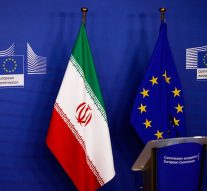
EU – Iran economic cooperation: Is INSTEX a key?
Economy 18 November 2019As one of the middle range powers in international relations, Iran plays a vital role within the Middle East occurrences. Being under the US heavy sanctions, Iran is hardly managing to maintain trade with any other western country. Despite these sanctions, the EU had established INSTEX trading system with Iran, which alleviates trading endeavours of the EU Member States with this country. Not all aspects of potential economic cooperation are however satisfied. What are the key economic cooperation characteristics between the EU and Iran? Who plays the vital role in these relations and what is the future of the trade among the partners?
EU-Iran economic cooperation
The EU–Iran economic ties are rather complex and faced with political challenges and security/defence concerns over the Iran nuclear development program. The two sides’ cooperation however is on constant rise as both import-export are oriented towards maintaining coherent economic growth.
According to Eurostat, EU countries exported €2.14 billion of goods to Iran in 2017, decreasing almost to half from €4.57 billion in the same period in 2018. The EU Member States have imported €420 million of Iranian goods from January to June of 2019, showing 93 percent increase from €6.1 billion in the first half of 2018. While Germany, France, Italy, and the Netherlands were respectively the major exporters to Iran; Germany, Spain, France and Italy were the top importers from the country in the said time span, this year. The European Commission reports that trade with Iran is subject to the general EU import regime, since Iran is not a member of the World Trade Organisation (WTO) and any bilateral agreement exists between the EU and Iran. It thus supports the goal of Iranian accession to the WTO, a necessary step for Iran to trade globally as an effective and reliable actor.
Earlier this year Deutsche Welle reported that European Union announced its INSTEX mechanism to facilitate trade with Iran was up. France, Germany, and the United Kingdom informed participants that INSTEX have been made operational and available to all EU member states, and that the first transactions are being processed, said an EU statement. INSTEX, which stands for Instrument in Support of Trade Exchanges, is a payment system that will allow companies to trade with Iran despite the harsh US sanctions. It will function as a diplomatic shield allowing the exchange of goods without requiring direct transfers of money between Iran and EU companies.
As FT announced, sanctions have devastated the Iranian economy since “they were reimposed by Washington, in part by halting a big portion of Iran’s oil exports, its most valuable commodity”. Russia has strengthened its ties with Iran in recent years as part of Moscow’s increased geopolitical importance in the Middle East, including its role of propping up the Assad regime in the war in Syria. At a meeting with Iran’s president Hassan Rouhani last month, Russian president Vladimir Putin vowed to continue developing trade ties with Tehran and said Moscow was committed to a project to expand the Bushehr nuclear plant in Iran. Efforts to rescue the nuclear deal have been a rare area of cooperation between Brussels and Moscow, whose relations soured after Russia’s 2014 annexation of Crimea, the attempted murder of a former Russian double agent in the UK and alleged attempts to meddle in EU elections.
At the beginning of the 2019, Federica Mogherini exposed her views that the EU will continue to accompany the work of its Member States involved to make this vehicle (INSTEX) operational as soon as possible in close coordination with the Iranian counterparts. The European Union continues to be committed to the full and effective implementation of the JCPOA in all its aspects as long as Iran continues to implement in full all its nuclear commitments, as set out by the agreement. The International Atomic Energy Agency (IAEA) has confirmed in thirteen consecutive reports that Iran is fully abiding by its commitments under the agreement.
The future of the EU-Iran economic cooperation is yet to be defined, as the 27 Bloc still has its own internal issues which could be obstacle to manage this cooperation in full capacity. The analysis of efficiency of the INSTEX mechanism will be possible at the end of this year, as it would cover a one year period.



